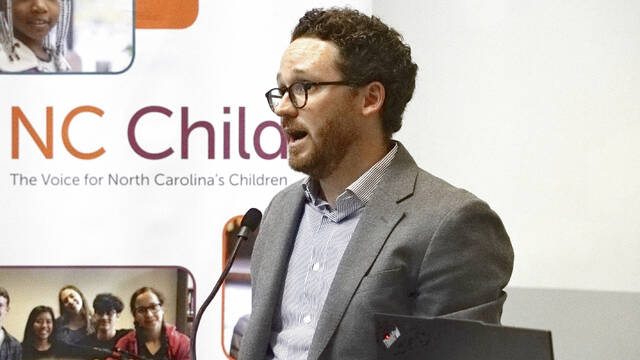HAMLET — Not-for-profit group NC Child held a symposium for area leaders and educators outlining disturbing figures as a result of a comprehensive study.
During the meeting, NC Child Research Director Neil Harrington revealed his findings, indicating numerous socio-economic deficiencies that may have a domino effect across generations of Richmond County families without intervention.
“The collaboration and participation of from key leaders, the businesses and the overall community in Richmond County is going to be relevant and important as we continue to improve the outcome of all of the kids of Richmond County. It is our responsibility in this community to ensure our children thrive and have the resources to do so in their lives,” Richmond County Chamber of Commerce Director Kristi King said.
With Richmond County having the third highest mortality rate in North Carolina, data seems to indicate many area children experience hardship from the moment they are born.
“Richmond’s 2022 child mortality rate was about 140 deaths per 100,000 children. It’s almost double the rate that you see in North Carolina. It’s actually the third highest child mortality rate in the state of North Carolina,” Harrington said.
Despite a growing middle class in Richmond County, financial hardships may also affect the health and well-being of area children. Forty-two percent of Richmond County children live with single mothers, and 41 percent live in poor or low-income homes. Access to childcare or after-school programs for children is especially taxing on area families, considering the state experienced a 90 percent increase in childcare costs. In Richmond County, for instance, infant care facilities can cost families as much as $7,280 per year while toddler care facilities can run as much as $6,890. With an annual median household income in Richmond County $42,354, 19.6 percent of children live in food-insecure homes and 4.8 percent are uninsured.
“[Childcare] represents about 9 percent of the income of a married couple and 43 percent of the income of single moms,” said Harrington, who speculated Richmond County single fathers could spend as much as 25 percent of their incomes for childcare. “… These are median incomes. Half of the people are earning below this and half are earning above it. Parents of young children are much more likely to be earning below that level because they are younger and earlier in their careers. They are not earning as much money, so childcare for young parents is really more expensive.”
One figure startling many in attendance was only 35.8 percent of third graders in Richmond County scored proficient in reading. Harrington believes early childcare could be a factor in that figure. Richmond is also .5 percent higher than the state average in high school graduation rate and .9 percent higher than the state average in citizens with a bachelor’s degree or higher. Along with children in Richmond County being below average in reading proficiency, their challenges morph as they reach high school and middle school. Area kids are 8.7 percent higher than the state average in delinquency and 3 percent higher than the state average for children assessed for abuse or neglect.
“Over the past couple of years, prices have abated some, but too many parents across the state are still struggling to provide food for children. Similar kinds of data from this year show 1 in 4 households with children in North Carolina report their kids are not eating enough due to food affordability. Choosing between providing enough food for your children or paying the light bill or covering rent or paying for healthcare shouldn’t be a choice parents have to make, but in North Carolina, it’s one too many parents have to make,” Harrington said.
Following the meeting, many area leaders expressed their thoughts on the data, and hope to have meetings in the future in order to resolve some of these issues as a community, and not simply as a representative of their governing body of organization.


